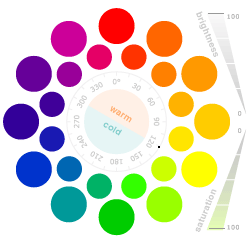What is the Standard Potential and what defines the Nernst Equation?
Miscellanea / / August 02, 2022
The standard electrode potential is defined as the voltage under standard conditions of a half-cell or half-cell, taking the hydrogen electrode as the reference electrode. Meanwhile, the Nernst Equation is the one that allows calculating the potential variation when the concentration and pressure values deviate from the standard values.






Chemical engineer
First of all, it is necessary to understand the concept of cell potential. When preparing a cell galvanic or battery Energy of the redox reaction is produced by the movement of electrons through a conductor depending on the capacity of the couplings to allow that flow, according to the strength driving force This electrical magnitude is measured through the potential difference or voltage and is known as electromotive force or FEM. This EMF can be measured through a voltmeter, for example.
When this potential difference is measured under standard conditions, it is known as the Standard Electrode Potential or \(fe{{m}^{{}^\circ }}\) or \(∆{{E}^{{}^ \circ }}\). Standard conditions refer to concentrations of pure solids and liquids of 1 mol/L and of gases at 1 atm pressure.
Since it is not possible to measure the potential of an isolated electrode, a flow of electrons between two electrodes is required. poles, the potential of an electrode can be determined by assigning the zero value to one of them and knowing ∆E of the cell. To do this, the potential difference is measured against a reference, the standard hydrogen electrode (SHE), where the platinum electrode (inert) It is enclosed in a glass tube where gaseous hydrogen is bubbled at a partial pressure of 1 atm, in a certain solution at 25ºC and 1 mol/L of concentration. By convention, the potential value of this electrode under the standard conditions mentioned is 0 V, since the oxidation of H occurs in it.2 (g) and the reduction of H+ in solution.
Let us see the case applied to the Daniell Cell, where by tabulated values the standard potentials of the electrodes are: for the oxidation of Zn (s) -0.76 V and for the reduction of Cu+2, 0.34 V. Then, the value of \(∆{{E}^{{}^\circ }}\) results from the difference between the standard reduction and oxidation potentials being: 0.34 V – (-0.76 V) = 1.10 V. Since \(∆{{E}^{{}^\circ }}\) is positive, the reaction is spontaneous.
There is a relationship between the standard potential of the cell and its constant. Balance. We know that the standard free energy of reaction is:
\(∆{{G}^{{}^\circ }}=-nF∆{{E}^{{}^\circ }}\)
Where n is the number of electrons that come into play in the redox process, F is Faraday's constant (96485 C/mole of electrons) and \(∆{{E}^{{}^\circ }}\)the potential difference of the cell under conditions standards.
Likewise, \(∆{{G}^{{}^\circ }}\) is related to the equilibrium constant of the process:
\(∆{{G}^{{}^\circ }}=-RTlnK\)
By equating both expressions, the relationship between the equilibrium constant K and the standard potential can be found:
\(lnK=\frac{n~F~∆{{E}^{{}^\circ }}~}{R~T}\)
Now, assuming that the oxidation-reduction reaction is carried out under conditions different from the standard ones, this potential must be recalculated. To do this, the German scientist Nernst developed an expression that relates the standard potential of the battery to its potential under different conditions, being:
\(∆E=∆{{E}^{{}^\circ }}-\frac{R~T~}{n~F}\ln Q\)
Q being the reaction quotient and R expressed in J/mol. K.
It is common to find different or simplified expressions of the Nernst Equation, for example, if we attribute a temperature of 298 K to the process and converts the logarithm natural in decimal logarithm, the expression results in:
\(∆E=∆{{E}^{{}^\circ }}-\frac{0.05916~V~}{n~}\log Q\)
It is easily identifiable that when the cell begins to work and reactants are consumed generating products, the value of Q begins to increase, according to its definition, until \(∆E\)=0. At this moment, the system is in equilibrium and Q = Keq.
Let's see an example of the Nernst Equation applied to the Daniell Cell. Recalling that the standard potential was 1.1 V (as we saw earlier), if we vary the concentrations, suppose we now have solutions of Cu+2 of 0.3 mol/L and Zn+2 of 3 mol/L (instead of 1 mol/L). The cell potential at 298 K would be given by:
\(∆E=1.1~V-\frac{0.05916~V~}{2}\log \left( \frac{3}{0.3} \right)=1.07~V\)



